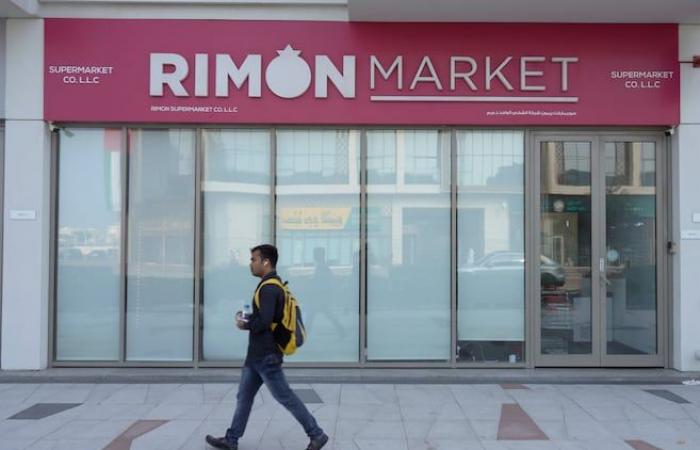The UAE Interior Ministry later said authorities had arrested three individuals involved in Zvi Kogan’s murder.
Israeli Prime Minister Benjamin Netanyahu’s office said Israel “will act by all means to obtain justice from the criminals responsible for his death.” Israeli authorities did not say how they determined that Mr. Kogan’s killing was a terrorist attack and provided no additional details.
Zvi Kogan, 28, is an ultra-Orthodox rabbi who disappeared last Thursday. He operated a kosher grocery store in the city of Dubai, where Israelis have flocked for trade and tourism since the two countries established diplomatic ties during the Abraham Accords, two peace treaties agreed between Israel and the Emirates. United Arabs on the one hand and between Israel and Bahrain on the other.
The deal held up for more than a year as regional tensions soared, sparked by Hamas’ attack in southern Israel on October 7, 2023. Israel’s devastating retaliatory offensive Israel’s Gaza and its invasion of Lebanon, after months of fighting with the militant group Hezbollah, has stoked anger among Emiratis, Arab nationals and others living in the Arab Emirates united.
Iran, which supports Hamas and Hezbollah, has also threatened retaliation against Israel after a wave of airstrikes carried out by Israel in October in response to an Iranian ballistic missile attack.
“In record time”
The UAE government did not respond to a request for comment. However, senior Emirati diplomat Anwer Gargash wrote on X in Arabic on Sunday that “the UAE will remain a home of security, an oasis of stability, a society of tolerance and coexistence, a beacon of development, pride and progress “.
The official UAE News Agency (WAM) on Sunday acknowledged Mr Kogan’s disappearance, but did not acknowledge that he held Israeli citizenship, referring to him as Moldovan. The Emirates Interior Ministry referred to Rabbi Zvi Kogan as someone who was “missing.”
“Specialized authorities immediately began carrying out searches and investigations upon receipt of the report,” the Interior Ministry said.
The ministry later said three perpetrators of the attack had been arrested “in record time” without giving further details.
“Deeply shocked”
Israeli Prime Minister Benjamin Netanyahu said he was “deeply shocked” by the disappearance and death of Mr. Kogan during a regular meeting of his cabinet on Sunday. He said he appreciated the UAE’s cooperation in the investigation and said ties between the two countries would continue to be strengthened.
Israeli President Isaac Herzog, whose role is mainly symbolic, condemned the murder and thanked the Emirati authorities for “their rapid action”. He added that he hoped they would “work tirelessly to bring the perpetrators to justice.”
Israel also again warned against all non-essential travel to the Emirates following Mr Kogan’s killing.
“It is feared that there is still a threat against Israelis and Jews in the region,” the government warned in a warning issued on Sunday.
An influential rabbi
Rabbi Kogan was an emissary of the Chabad-Lubavitch movement, a branch of Hassidism centered in a Brooklyn neighborhood in New York City. He was last seen in Dubai. The United Arab Emirates has a thriving Jewish community, with synagogues and businesses offering kosher meals.
Rimon Market, a kosher grocery store that Mr. Kogan ran on Dubai’s busy Al Wasl Street, was closed on Sunday. Religious objects appeared to have been torn from the front and back doors of the market when an Associated Press journalist passed by on Sunday.
As wars rock the region, the store has been the target of online criticism from supporters of the Palestinians. Mezuzahs on the market’s front and back doors appeared to have been torn off when an Associated Press reporter stopped by Sunday.
Mr. Kogan’s wife, Rivky, is a U.S. citizen who lived with him in the United Arab Emirates. She is the niece of Rabbi Gavriel Holtzberg, killed in the 2008 Mumbai attacks.
The United Arab Emirates is an autocratic federation of seven sheikhs from the Arabian Peninsula with Abu Dhabi as its capital. Leaders of the UAE’s Jewish communities declined to comment on the matter.
Although the Israeli statement did not mention Iran, Iranian intelligence services have previously carried out kidnappings in the United Arab Emirates.
Western officials believe Iran is conducting intelligence operations there and monitoring the hundreds of thousands of Iranians living there.
Iran is suspected of kidnapping and then killing British Iranian national Abbas Yazdi in Dubai in 2013, although Tehran has denied involvement. Iran also kidnapped Iranian-born German Jamshid Sharmahd in 2020 in Dubai, bringing him back to Tehran, where he was executed in October.






